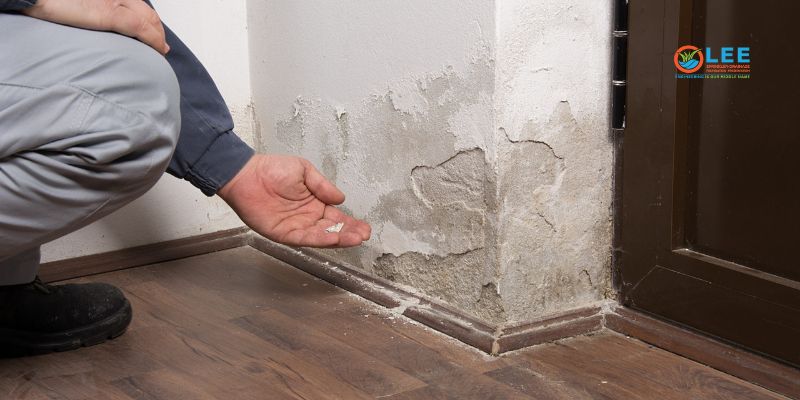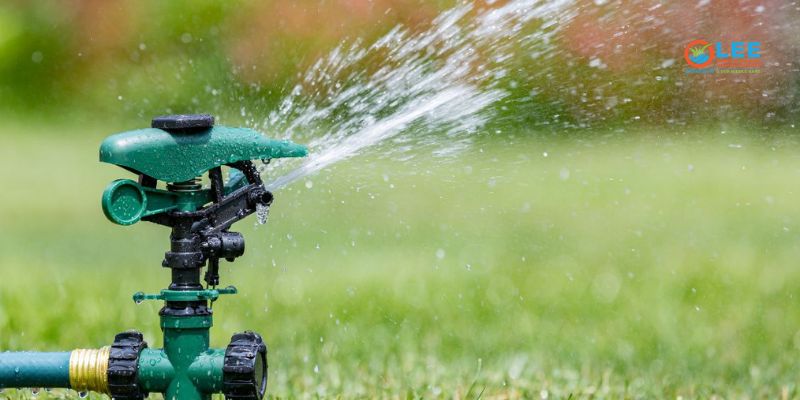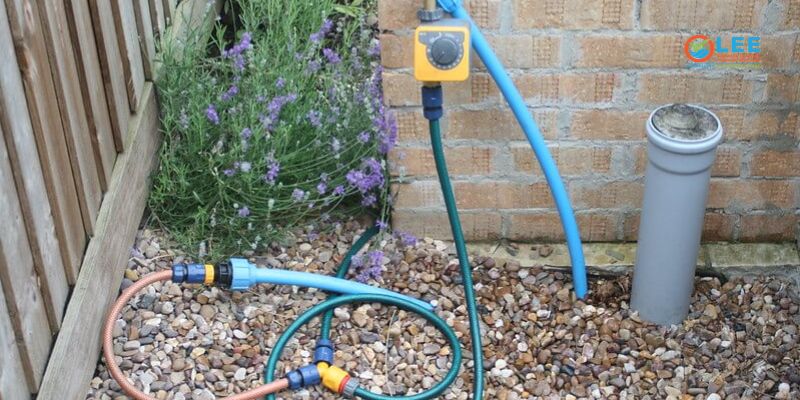Your home’s foundation is more than just the base on which your house stands; it’s a crucial element in maintaining the structural integrity of your property. One often underestimated aspect of foundation care is proper watering. Many homeowners overlook the impact that water, or lack thereof, can have on their foundation. Understanding how to water your foundation effectively is essential for preserving the longevity and stability of your home.
Understanding the Role of Water
Water is both the sustainer and potential nemesis of your home’s foundation. It serves a dual purpose: providing essential hydration to prevent soil shrinkage and maintain stability while also being a potential threat through oversaturation, causing soil expansion and subsequent damage.
Effects of Improper Watering
Watering can prevent the soil beneath the foundation from drying out and shrinking. As the soil contracts, it creates empty spaces where the foundation may settle, leading to cracks, shifts, or structural damage. Conversely, overwatering can lead to soil expansion, resulting in excessive pressure against the foundation and upheaval, cracks, or heaving.
The Importance of Foundation Watering
1. Prevention of Soil Shrinkage and Settlement
Proper foundation watering is a proactive measure against soil shrinkage. In dry conditions, the soil around the foundation can dry out, leading to contraction and creating empty spaces beneath the foundation. This soil shrinkage can cause the foundation to settle unevenly, resulting in cracks, structural issues, and compromised stability. Adequate watering helps maintain consistent moisture levels, preventing soil shrinkage and subsequent settling.
2. Mitigation of Soil Expansion and Upheaval
Conversely, overwatering or excessive moisture accumulation around the foundation in wet conditions can expand soil. Expanded soil exerts pressure against the foundation, potentially causing upheaval, shifts, or cracks. Proper watering practices help regulate moisture levels, reducing the risk of soil expansion and its damaging effects on the foundation.
3. Preservation of Foundation Stability
A stable foundation is the cornerstone of a secure home. You support the foundation’s stability by ensuring the soil underneath remains hydrated. Consistent moisture levels in the soil help prevent drastic changes that could compromise the structural integrity of your home.
4. Prevention of Costly Structural Repairs

Regular foundation watering can significantly reduce the risk of severe structural damage requiring extensive and costly repairs. Minor cracks or shifts due to improper watering can escalate into major structural issues. Maintaining the right moisture balance through proper watering techniques minimizes the likelihood of such extensive damage, saving money and the hassle of significant repairs.
5. Longevity of Your Home
A well-maintained foundation directly contributes to the longevity of your home. Foundation watering, when done correctly, helps to preserve the structural soundness of your house. It ensures that your home remains stable, secure, and structurally sound for years, ultimately extending its lifespan.
6. Protection Against Seasonal Changes
Foundation watering plays a crucial role in safeguarding your home against the impacts of seasonal changes. Weather patterns, from dry summers to wet winters, can significantly affect the soil surrounding your foundation.
Adjusting your watering routine according to these seasonal variations helps maintain a stable environment for the foundation. Increased watering prevents soil desiccation during dry periods, while reducing watering during rainy seasons prevents oversaturation. This adaptability shields the foundation from the potentially damaging effects of extreme weather changes, ensuring its long-term resilience.
Optimal Foundation Watering Practices
Monitoring Soil Moisture
The first step in adequate foundation watering is monitoring soil moisture. Invest in a soil moisture meter or perform regular manual checks to gauge the moisture level around your foundation. This helps in understanding when and how much water your foundation requires.
Weather Considerations
Your region’s climate plays a significant role in determining foundation watering needs. Dry, arid climates necessitate more frequent watering to combat soil desiccation. On the other hand, humid environments require less watering. Understanding the weather patterns in your area can guide your watering schedule.
Seasonal Adjustments
Foundation watering needs vary across seasons. More frequent watering might be necessary during dry periods, particularly in the summer. However, decreasing watering in the rainy season might be prudent to avoid oversaturation.
Recommended Watering Techniques
Deep Watering

Instead of frequent shallow watering, focus on deep watering sessions. Deep watering encourages the roots of plants and trees around your home to grow deeper, reducing competition for moisture with the soil beneath the foundation.
Proper Drainage
Ensure your home has adequate drainage systems to prevent water pooling near the foundation. Properly functioning gutters, downspouts, and sloping landscapes away from the house are critical to diverting excess water.
Slow Water Application
Use a slow and steady watering approach to allow the soil to absorb moisture without creating runoff. Drip irrigation or soaker hoses are excellent methods to ensure gradual, consistent water distribution.
Common Mistakes to Avoid
Overwatering
Excessive watering can be just as damaging as insufficient watering. Overwatering leads to soil expansion and puts pressure on the foundation, potentially causing structural issues.
Neglecting Maintenance
Regular inspection and maintenance of your home’s drainage systems are crucial. Clogged gutters or faulty downspouts can accumulate water around the foundation, causing damage over time.
Ignoring Signs of Foundation Issues
Cracks in walls, uneven floors, or doors or windows that no longer close correctly indicate potential foundation problems. Ignoring these signs can exacerbate the damage, leading to costly repairs.
Additional Considerations
Trees and their Impact
Trees planted too close to the house can significantly affect the moisture content of the soil near the foundation. Their roots compete for water, potentially causing a soil imbalance. Regular tree maintenance and strategic planting can mitigate this impact.
Professional Assessment
Seek a professional assessment if you notice signs of foundation issues or have concerns about your home’s structural integrity. Foundation experts can provide insights and solutions to address problems and prevent future issues.
Conclusion
Caring for your home’s foundation through proper watering practices is a proactive measure for preserving its structural integrity. Understanding the balance between hydration and soil stability is pivotal. Regular monitoring, adjusting to seasonal changes, and avoiding common mistakes can significantly contribute to the longevity of your home.
By implementing these foundation watering practices, you’re not just safeguarding the base of your house; you’re ensuring a secure and stable environment for you and your loved ones for years to come.

